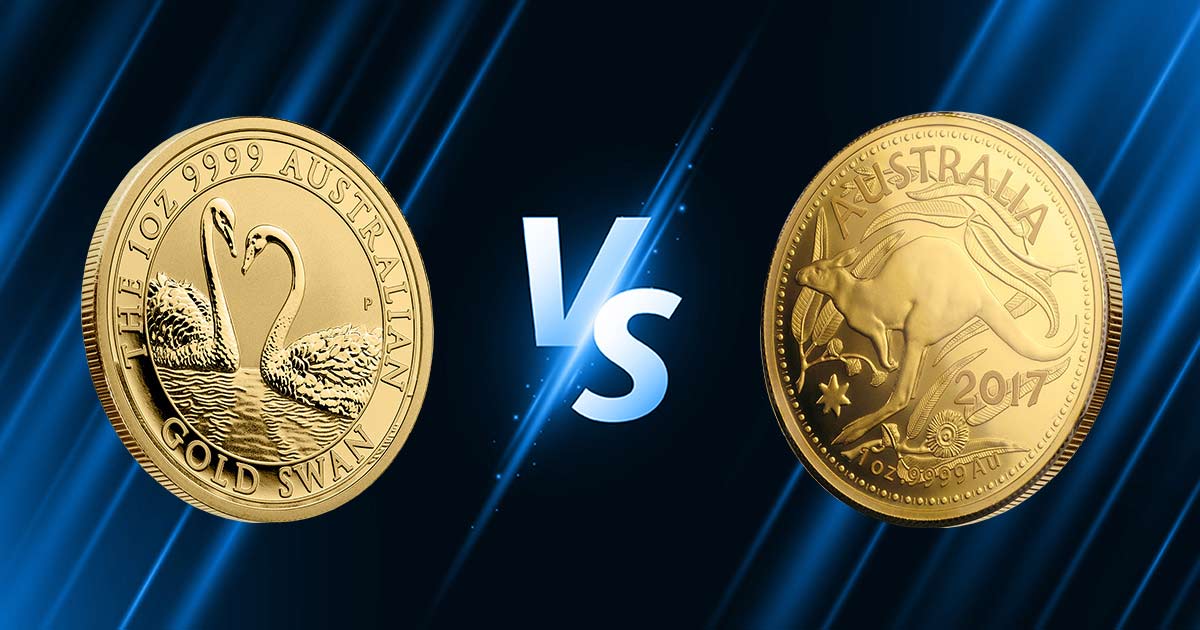
There are numerous differences between the Perth and Royal Australian Mints. The biggest difference between the two is that the Royal Australian Mint is the only mint that issues circulating currency in Australia, and the Perth Mint issues bullion and proofs.
Key Differences between the Perth Mint and Royal Australian Mint
While the Perth Mint was established as a branch of the Royal Mint in London, it only issued circulating currency from 1899 until 1931. Today, the Perth Mint produces gold and silver Kangaroos, Kookaburras, Swans, Koala, and other issues.
The Perth Mint also produces platinum coins like the platinum Australian Kangaroo.
In contrast, the Royal Australian Mint was established in 1965 by Prince Phillip, Duke of Edinburgh and has been issuing circulating currency since its opening. It was the first mint in Australian to operate independently of the British Royal Mint.
Today, the Royal Australian Mint is the only Australian mint that issues circulating currency. The Royal Australian Mint issues gold and silver Kangaroo and Lunar coins, as well as Dolphins.
While the Perth Mint and the Royal Australian Mint both issue coins like Kangaroos and the Lunar Series, they use unique designs.
| The Royal Australian Mint | The Perth Mint | |
| Location | Canberra | Perth |
| Year Established | 1965 | 1899 |
| LBMA Member | No | Yes |
| Owner | Australian Government | Government of Western Australia |
| Issues Circulating Currency | Yes | No |
| Specialty | Domestic Market | International Market |
| Focus | Heritage and Tradition | Technology and Innovation |
| Refining Services | No | Yes |
| Depository Services | No | Yes |
History of the Perth Mint
The Perth Mint was established as the third branch of the Royal Mint in Australia, and it has been a major contributor to the international gold industry since 1899. The foundation stone of the Perth Mint was laid in 1896 by Sir John Forrest, the first Premier of West Australia.
In the years it minted circulating coins (1899-1931), it issued more than 106 million Gold Sovereigns and almost 735,000 Half Sovereigns.
In 1957, the Perth Mint produced a proof ‘plate’ with almost-.999999 fine gold as measured by the London Worshipful Company of Goldsmiths. In the 1980’s, the Perth Mint was sold to Goldcorp to issue bullion coins and ingots. Today, the Perth Mint is a subsidiary of the Government of Western Australia and is the official producer of Australian bullion.
The Perth Mint is known for its gold, silver, and platinum coins and bars. It produces non-circulating legal tender coins under license as a private mint, in addition to the bullion it produces for Australia.
Before any bullion coin is issued by the Perth Mint under the Australian Currency Act 1965, its design and total number to be produced must be authorized by the treasury. Perth mintages typically range from 50 to 5,000.
History of the Royal Australian Mint
Before the Royal Australian Mint opened in 1965, circulating coins were produced by the Sydney Mint, Melbourne Mint, and Perth Mint. Plans for the Royal Australian Mint were laid in 1959.
It was proposed that the Melbourne branch of the Royal Mint be moved to Canberra, where a large site had already been chosen in the suburb of Deakin. The Chief Designing Architect in the Commonwealth Department of Works, Richard Ure, designed the mint in an international style.
The 1965 opening of the Royal Australian Mint coincided with the introduction of the decimal system to the Australian dollar. The new Royal Australian Mint and the Melbourne Mint both operated until sufficient stockpiles of coins were prepared, and the Canberra Mint was operating smoothly.
In 1967, the Melbourne mint was closed, and some of its staff were relocated to Canberra to operate the new mint. Since its opening, the Royal Australian Mint has produced more than 15 billion coins.




